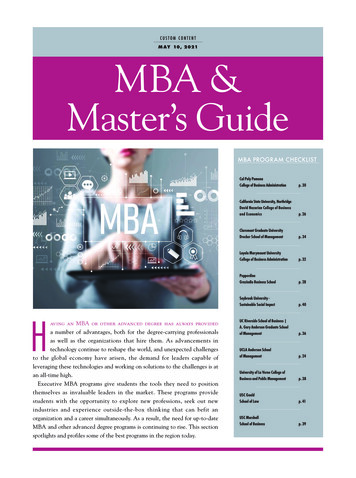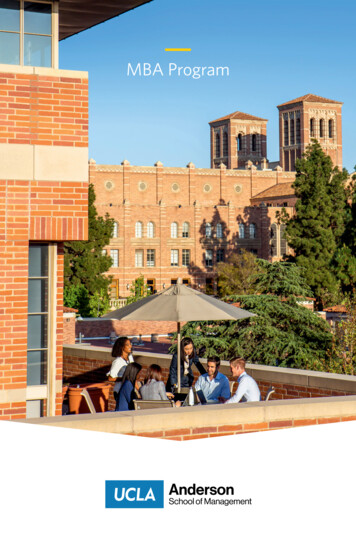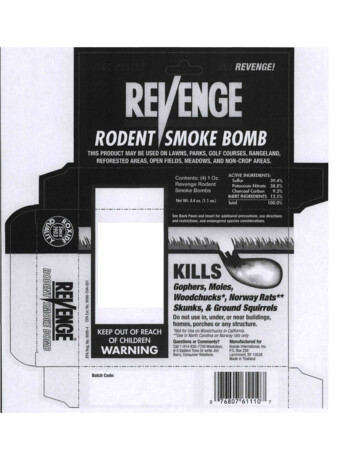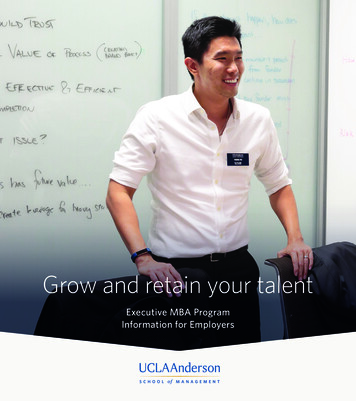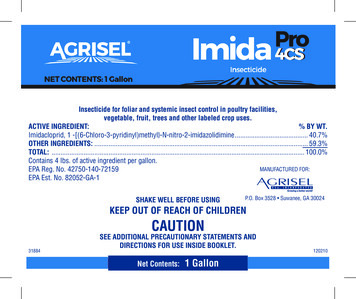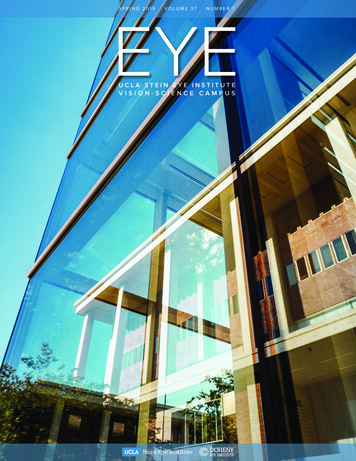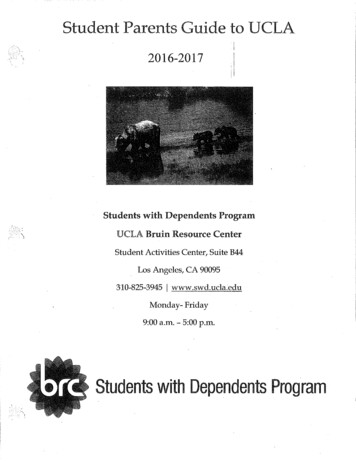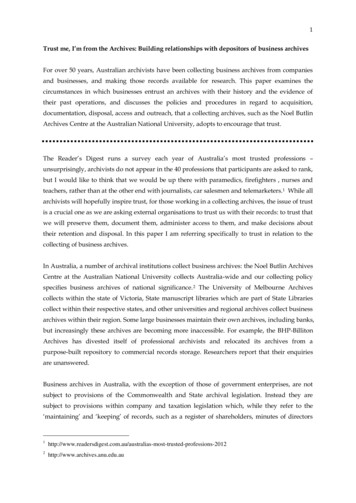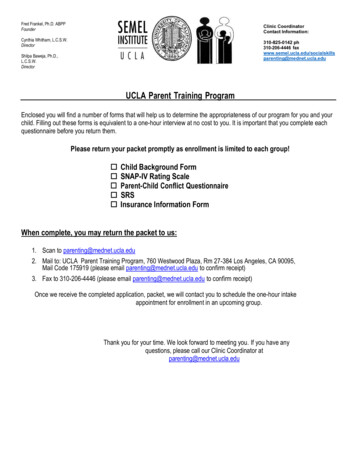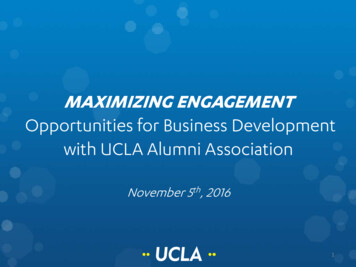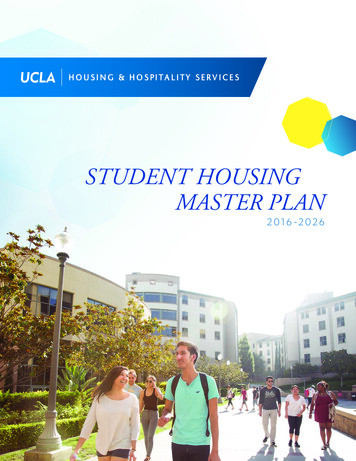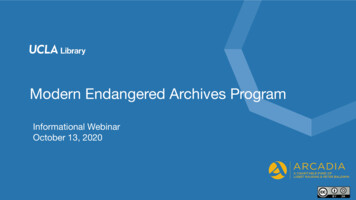
Transcription
Modern Endangered Archives ProgramInformational WebinarOctober 13, 2020
Agenda1.What is MEAP?2.MEAP Eligibility3.The MEAP Application Process4.Applying to MEAP (via Survey Monkey Apply)5.Best practices for Completing a Successful Preliminary Application6.Questions and Answershttp://bit.ly/MEAP guidelines
ONEWhat is MEAP?
MEAP: GoalsThe Modern Endangered Archives Program (MEAP) is a UCLA Library grantingprogram.We fund projects to document, digitize and make accessible endangeredarchival materials from the 20th and 21st Centuries, including print, photographic,film, audio, ephemeral, and born digital objects.
MEAP: GoalsWe aim to fund projects that: Preserve at-risk cultural heritage Build local capacity Expand the culture for openaccess*All criteria for evaluating applications.From “Archival Images from the Albanian National FilmArchive” (AQSHF)
MEAP: Program OverviewMEAP will support projects to organize, collect, convert and describe archivalmaterial or existing digital assets.PLANNING GRANTS [up to 12 months, 15,000] Document: Catalogue, assess, surveyEvaluate or secure rights through communal engagement, relationship and trust buildingPROJECT GRANTS [up to 24 months, 50,000] Document: Item level metadata creation on the UCLA Metadata templateDigitize: digitally convert original materials - print, audio, video Curate existing digital materials (social media content, email, software, other) by capturing andcataloguing according to a mutually agreed upon metadata template
MEAP: Program OverviewAccessAll MEAP content must be sharedopenly online.Survey, Inventory, Digital Images,Audio files, Video*Preservation Access
MEAP: Program OverviewAll MEAP content must be shared openly online Copyright Contemporary materials will likely be under copyright. Copyright ownershipfor the recording may not cover ownership of underlying content (i.e. song recorded at aconcert) Privacy Ethics Collections that document individuals, especially photos and videos,must account for individual consent and permissionProject team responsible for securing permission to publish content. Grant of Permission form highly recommended for Detailed Application for ProjectGrants Available in Arabic, English, French, Hindi, Portuguese, and Spanish. Can be translatedon request. Recommend Creative Commons, not required
MEAP: Program Overview Third Call for Applications 16 projects funded in round 1 22 projects recommended for fundingin round 2 Roughly 20% of applications arefunded. Growing each year. Archival material from 25 countriesthus far supported/soon to besupported by MEAPFrom “El gran film del Uruguay - Coleccion Carlos Alonso”(“The great film of Uruguay - Carlos Alonso Collection”)
TWOMEAP Eligibility
MEAP: EligibilityMEAP funds are designated for work on collections outside North America andEurope. We aim to fund digitization of at-risk archival materials in geographic areaswithout resources available for preservation.5 primary categories for eligibility based on the content of the project, not on theresearcher. Also criteria for eligibility of the project team.
MEAP: Eligibility1.ENDANGERMENTArchival content must be imminently at-risk due to environmental conditions, politicaluncertainty, inherently unsustainable media, inappropriate storage, and/or communal orsocial change.Focused on MATERIAL ENDANGERMENT.Loss of knowledge or communal understanding of the collection is not a criteria forendangerment for MEAP. However, it is an important component for building your projectteam and project work plan. Will you engage with the local community or communityleaders to document materials and create rich, contextual metadata?
MEAP: Eligibility Age of Material From the early 20th century to the present, preferably with a majority of thematerial dating from the 1950s or later. Subject Matter Materials should document history, society, culture, and politics, with anemphasis on social justice, human rights, and under-documented communities. Geographic Focus Materials from regions outside North America and Europe are preferred.We encourage applications from Africa, the Caribbean and Latin America, the Middle East,Central Asia, South and Southeast Asia, and Oceania. Applications from North America andEurope are eligible to apply only if resources are limited for preserving archival material andother avenues for funding have been exhausted. Format Materials may be in a variety of formats, including print, audio, video, photographs,ephemera, and born-digital files (including but not limited to blogs, cell phone videos, websitepages, 3D images, magnetic tape, and social media content).
MEAP: EligibilityELIGIBLE APPLICANTS:Individual applicants must be associated with an institution and cannot apply for independentfunding.Applicants may be: Any accredited member of teaching or research faculty at a university or similar highereducation institution.Archivists and librarians with responsibilities for special collections in archives, a national orresearch library, or a similar institution.Affiliated leaders of not-for-profit organizations or community organizations that hold at-riskcultural heritage materials.Can be graduate students, but must have established long term institutional commitment.What if you graduate? What if you move institutions?
MEAP: EligibilityELIGIBLE INSTITUTIONS:Grants must be administered by not-for-profit organizations. Host institutions should be acommunity organization, university, archive, library, research or cultural institution. Applications from state institutions requesting support for the preservation of their ownholdings should demonstrate some contribution in kind, such as the provision of staff time,training or workspace.Each project must have an administrative contact who has financial and signatory authority(this may be the principal applicant or another individual at the funded institution.Host Institution is responsible for managing and reporting on the grant funds throughoutthe full lifecycle of the project. Also for committing to legal subaward agreement.
EligibilityQuestions?
THREEMEAP Application Process
MEAP: Application DatesPreliminary ApplicationDue Nov 9, 2020MEAP Internal ReviewDecision communicated by Dec 2020Detailed ApplicationDue Feb 9, 2021Referee report due February 15, 2021 Archival Partner Form(s)Grant of Permission Form(s)Referee contact information reportExternal Review, MEAP Board ReviewDecisions CommunicatedSummer 2021
Application: Terms Primary Applicant There must be one single principal applicant who takes responsibilityfor the planning and execution of the project. 3 co-applicants can be added (collaborators).Co-applicants can help manage or direct the program. Host Institution Should be a university, research institution, archive or similarnoncommercial institution to which the grant will be awarded. This institution may or maynot be your home institution. The institution will administer and account for the funds. Archival Partners If the collection is not housed at your institution, the organization thatcurrently houses and/or owns the archival material is the Archival Partner.
MEAP: Application Process1.PRELIMINARY APPLICATIONPreliminary Applications are reviewed by UCLA Library staff for eligibility.Send feedback for programs invited to complete a Detailed Application. Are materials from 20th or 21st Century?Are materials currently held outside North America, Europe (EU)?Will project be possible given ongoing pandemic and global/localrestrictions?Has project team considered question of rights regarding OpenAccess publishing?
MEAP: Application Process2.DETAILED APPLICATIONIf invited to complete a detailed application, applications will be reviewed byUCLA Library staff, technical experts, external experts (like peer review) andthe MEAP Review Board. Evaluation criteria includes: Endangerment How urgently at risk is the content?Scholarly significance How will the availability of this content impact research?Uniqueness Is this material accessible elsewhere? Has it already been digitized?Viability of online publication Has permission to publish online been secured?Does the project team have a plan for assessing ethical or privacy rights?Project feasibility Consideration includes the expertise and experience of theproject team defined in the application
MEAP: Additional Components2.DETAILED APPLICATIONPermissions Will the UCLA Library be able to publish material online? Have youidentified potential concerns or found documentation that details ownership?Work plan How well thought out is your work plan for survey, digitization, andmetadata? Do you have the right team in place to do the work? Have you accounted forcreating English language metadata?Capacity Building Are MEAP funds budgeted to build local capacity? Consider howyou will budget for salaries, training, workshops.
Application2.DETAILED APPLICATION - Additional FormsArchival Partner Form Commitment form for your archival partner. If you have morethan one, you’ll need more than one form.Grant of Permission Form Commitment form for copyright owner or archivalsteward. Best accompanied by formal documentation of copyright transfer orownership.
meap.library.ucla.edu About Resources and Documentation
meap.library.ucla.edu About Resources and Documentation
Application ResourcesMEAP Guidelines Details the application process, program criteria, and eligible (and ineligible)expenses. Available in Arabic, English, Farsi, French, Hindi, Indonesian, Portuguese, Spanish,and Swahili.Application Template Details the Preliminary and Detailed Application. Should be used asguides before submitting online applications. Makes clear what you need to complete the onlineapplication.FAQ for Applicants Explores commonly asked questions related to the Preliminary andDetailed application. Includes details about eligibility, due dates, and best practices for securingreferees and writing budgets.
meap.library.ucla.edu
meap.library.ucla.edu About
meap.library.ucla.edu About How to Apply
meap.library.ucla.edu About How to Apply
Detailed ApplicationTemplate coming soon.meap.library.ucla.edu About How to Apply
meap.library.ucla.edu About Resources and Documentation
meap.library.ucla.edu About Resources and Documentation
Project Planning ResourcesIDEP Toolkit Metadata Template This toolkit outlines standards, workflows, andbest practices for digital preservation projects.Audio Visual Project Planning Guides New Toolkits Available! Planning a Audio Digitization Project Planning a Video Digitization ProjectSurvey Templates Reference for Planning Grants MEAP Template for Survey Planning MEAP Template for Item Level InventoryEAP Remote Capture A guide for digitizing documentary heritage in challenginglocations.
FOURApplying to MEAP
Applying to MEAP All applications must besubmitted in EnglishAll applications must besubmitted through SurveyMonkey Apply athttps://meap.smapply.io/*Walk through available in Application TemplateFind at http://bit.ly/2020 Prelim
Applying to MEAP*Walk through available in Application TemplateFind at http://bit.ly/2020 Prelim
Applying to MEAP*Walk through available in Application TemplateFind at http://bit.ly/2020 Prelim
Applying to MEAP*Walk through available in Application TemplateFind at http://bit.ly/2020 Prelim
FIVEBest Practices:Completing an MEAP Application
Best Practices: Focus on the Collection Detail the kind of material and what it reveals. Consider why it is endangered, but also why it is important. What makes the collection unique and valuable to scholars? What makes the collection valuable to your community?
Best Practices: Focus on the CollectionDon’t just describe the relevancy of the project or the importance of theinstitution. Tell us what’s in the collection. Notebooks, letters, political texts, and handwritten diariesPersonal papers, organizational records, meeting minutes, posters from a politicalmovementRolls of nitrate film, shot in documentary style throughout documenting apre-modern rural lifestylePersonal collection of photograph documenting daily life from 1950 – presentExtensive documentation, including photographs, handwritten maps, andarchitectural drawings, of an archaeological site
Best Practices: Institution Project TeamDefine who will be working on the project and how they fit into the institution.Remember, MEAP seeks to build local capacity. Consultants, training, and management can be part of the project plan, but thebudget should not focus on consultants or travel costs. Budget salaries at an equitable rate for the staff who will conduct the work. Who will be imaging the material? Who will create the metadata? How does the project fit into the larger institution? Will the institution invest in the project through cost share?
Best Practices: Ineligible ExpensesMEAP will not fund INDIRECT COSTS. You should not list them as a line itemon your budget or as components of the budget. Salaries for people who will not be working on the project (i.e. finance team) Utilities or ongoing operations costs Space can be included as a cost, but we prefer that host institution or partnerinstitutions provide space as part of their investment Some preservation materials can be included, like archival folders or boxes, butlarge-scale infrastructure projects are not eligible.
MEAP Guidelinesmeap.library.ucla.edu About Resources and Documentation
Best Practices: Include ImagesBoth applications include the OPTION to upload photos or videos. Werecommend you use that module in the application to show our team and theapplication reviewers the state of your material.It can support your argument for ENDANGERMENT.Also, can help our team conduct a preliminary assessment of copyright byshowing us what’s in the collections.
Top Left: From “Ephemera from the Barbados Department of Archives” (HeritEDGE Connection)Top Center: From “Archival Images from the Albanian National Film Archive” (AQSHF)Top Right: From “The Photographer who woke up from the Dead - Mohlouoa T. Ramakatane” (Photography Legacy Project)Bottom Left: From “Archival Images from the Albanian National Film Archive” (AQSHF)Bottom Center” From “The Biobio Legacy: Mapuche-Pehuenche Organizing and Resistance in Chile” (Cristian Opaso)Bottom Right: From “Photo Slides from Afghanistan, Dupree Collection” (ACKU)
SIXQuestions and Answers
Representative QuestionsQuestion 1How are digital files displayed by UCLA? Would the content be displayed in fragments, as high-quality, etc.? Theartists sell copies of their work, so having fully high-quality copies online might interfere with it.A few different questions to address. First, files will be published on the MEAP website. Due to COVID-19related delays, we do not have any collections published yet. You can see what collections will look like on theIDEP website (another UCLA Digital Library project).As to the size or structure of the objects - they are published as you indicate to match the metadata youcreate. So, your project team may say that an object is one image or a paginated set of images or a full videorecording - depending on the collection particulars.Additionally, we require samples of digital objects and metadata early in the project lifecycle. One of the thingswe discuss is what constitutes a digital object for your project.Continued .
Representative QuestionsAnswer continuedThe question is also asking about the Open Access requirement. We ask each project team to providepreservation quality (high resolution, uncompressed) files as well as access quality (lower resolution) files. Theaccess files are published, the preservation quality files are hosted for long term preservation.Then, each project team has some flexibility about how they articulate the rights for reuse. In the metadatatemplate, you would indicate a rights statement. This can state that use is restricted for educational purposesor you can choose to assign a Creative Commons License that delineates use.The metadata template also has space to indicate the copyright holder and current contact information shouldusers want to inquire about publication or reuse.Please note that we also ask that materials digitized with MEAP funds are made accessible in their homecountry as well. So, if the materials will be inaccessible once sold, they may not be eligible for MEAP.
Representative QuestionsQuestion 2Is intangible heritage eligible for this grant?Generally, yes. The intangible heritage would have to be preserved or captured in some kind of archivalcollection that already exists. MEAP cannot fund the creation of new materials. So, we cannot fund oralhistory projects or video capture projects.If you have specific questions about the collection you want to work with, email us at meap@library.ucla.eduQuestion 3For a planning grant, if the application is successful, how early could the awardee start work?We work to send funds about 1 - 2 months after the paperwork is completed. This takes a different amount oftime for each project. In general, we recommend you plan to start no earlier than September or October 2021.
Representative QuestionsQuestion 4My registered trust with the government of India doesn't have what is called FCRA (permission to receiveinternational funds). Is it possible to apply under my trust in India, but receive the money in my personal account herein Singapore? I used the same arrangement with the British Library Endangered Archives program.Generally, yes. It is possible to register payment through a host institution that is in a different country thanyou. We would need to discuss this further when drafting the funding paperwork (after officially accepting theproject via email).
Representative QuestionsQuestion 5Some universities require a certain percentage of the grant to go towards administering the funds. Will the MEAPprogram cover indirect costs in addition to the grant? Or must it be accounted for as part of the grant budget?MEAP does not support indirect costs. You can refer to more eligible/ineligible costs in our GuidelinesDocument under “Budget Expenses”. If your project is recommended for funding, you will have to submit anexception request to your institution. We can try to help as best we can by sending a formal letter stating ourpolicy.
Representative QuestionsQuestion 6I’m a professor at a public university in Brazil. I have been working with the Landless Workers Movement to organizetheir archive. The movement is about 40 years old and it defends peasants here and also has international links throughthe Via Campesina. We have thousands of pages of published works, internal documents and reports to digitize. Themovement itself has a unit that takes responsibility for financial arrangements. The university’s role has been incoordinating the organization of the archive and the preservation of a large part of it. Who would apply for the funding?In this case, either organization could serve as the host institution. We recommend determining who would bethe best partner for you. Who will be most able to procure equipment, pay salaries, and provide financialreports as necessary?I also want to highlight something in this example: you note that the collection has published works, internaldocuments and reports. Please consider that these different types of materials might have different digitizationand rights challenges. Will you be able to publish online the published works? Are some of the materialsbounded and others not? Try to address these differences in your application - especially in the detailed phasewhen you write a work plan.
Representative QuestionsQuestion 7Are private manuscript collections held by individuals eligible? For example, in my country (Nigeria) we have oldmanuscript collections held by families that are prone to loss and deterioration. Will you consider such collections?Yes, we are open to personal/private materials as long as the authors approve of the material being publishedonline. You will also be responsible for ensuring that any sensitive/private data that should not be shared isomitted from the digitized materials sent to us. We will also ask that you find a local home for making materialopenly accessible as well. Would the families be willing to donate their materials to an archive? Or, will a localarchive host the digital materials?
Representative QuestionsQuestion 8If a library also wants to publish the materials on their website, is that possible?Yes, we welcome multiple points of access to digitized collections. Where relevant, we ask that MEAP becited as the founder of the project with the following language: “[This project] is supported by the ModernEndangered Archives Program at the UCLA Library with funding from Arcadia, a charitable fund of LisbetRausing and Peter Baldwin.”Material can also be published on a project website and you can designate some funds in the budget forwebsite development or maintenance.
Representative QuestionsQuestion 9Can the budget set in the preliminary phase be revised in the detailed application?Yes, the budget can be changed from the preliminary phase, as long as they fall within the boundaries for theappropriate application (planning grant within 15k, project grant within 50k).
Representative QuestionsQuestion 10In the budget, does MEAP look favorably on including cost share?MEAP does not require a cost share. However, our review panel does look favorably on institutions thatcontribute to the project. If the applicant comes from a US or Western Europe University, we like to see thatany travel costs are covered by other funds. However, a cost share might also look like the use of space, stafftime covered by a local archive, or the use of existing equipment.One note here: If you are applying from a national institution (.ie. a national library or archive), we do requiresome institutional investment. This might be dedicated space or additional staff.
Representative QuestionsQuestion 11We have some documents that the MST considers confidential. Do all documents have to be free to be published ona UCLA site?Our guidelines state that all materials digitized or documented (i.e. survey or inventory lists) with MEAP fundsmust be made openly accessible online. Additionally, “Viability of online publication” is one of the key criteriafor evaluating applications. So, we hope to see that the full collection you propose to digitize will be publishedonline.In reality, you may find some materials during the digitization process that cannot be published openly. Weaccept that up to 5% of a collection may need to be hidden or embargoed. If you know from the applicationstage - as you do here - that some of the material is confidential, we suggest leaving that part of thecollection out of the application. Can you focus on a different part of the collection for the MEAP project?
Representative QuestionsQuestion 12Do you only fund projects where the institution applicant itself does the digitizing, or could the project outsource theimaging?Outsourcing is acceptable for MEAP projects. However, we encourage you to consider how the project isbuilding local capacity as well. Will a local team create metadata? Will a local team ofarchivists/librarians/students manage the digitization of print materials while you outsource video or audio?Depending on the makeup of your collection, outsourcing can make a lot of sense. But, outsourcing shouldnot reflect a majority of your budget.
Representative QuestionsQuestion 13If my project deals with a section of a larger collection, and we have material already digitized from other sections,would UCLA include the other materials on the open access website?If your project is funded and you are working with a small part of a larger collection, we would welcome aconversation about the bigger collection. It’s possible that the UCLA Library and MEAP would want to hostadditional components of the collection to make the full set of materials available online. We certainlyunderstand the desire to have full collections be accessible as a whole.However, we cannot guarantee that we will be able to host or publish content beyond what we commit tothrough the MEAP contract. It’s possible that materials digitized before the MEAP grant were digitized at alower resolution than we require. It’s likely that the metadata you have for an earlier part of the project will notmatch our publication system and would need to be mapped into a new template.So, we are open to publishing and hosting larger collections - especially as your work continues after theproject grant cycle, but we cannot make any guarantees.
Representative QuestionsQuestion 14My institution has a collection of magazines and newspapers from the mid-20th century that belonged to a greatPeruvian thinker. This collection is composed of unique titles from various parts of the world that have been mailed toyou and contain valuable content on political and social history. Can this material participate?The best answer we can give is maybe. If your institution has the copyright of the individual’s collection, itdoes not mean that they have the rights to digitize and publish previously published materials. At theapplication phase, you would have two different jobs. First, you should highlight which pieces are, in fact,unique. Are they available in any libraries? Are they available online anywhere? If not, great! If they areavailable elsewhere, we suggest you apply to focus on a different set of the collection.Second, you will have to do research related to the rights of each separate publication. Do the publicationsstill exist? Do the publication companies exist? If a newspaper is no longer in print, was the paper bought byanother paper? It will be your responsibility to track down the rights owner(s) for those materials.
Representative QuestionsQuestion 15To contact you about very specific questions, do we email you directly or the MEAP general email address?Please contact us with questions specific to your project. We can correspond by email or set up time toconnect via zoom if it makes sense. You can reach out to us at this email: meap@library.ucla.eduWe will also host another webinar ahead of the Detailed Application due date to discuss the process for thelonger application.
THANK YOUContact usWebsite: meap.library.ucla.eduMailing list: tinyletter.com/ModArchivesUCLAEmail: meap@library.ucla.eduTwitter: @ModArchivesUCLA
MEAP: Eligibility MEAP funds are designated for work on collections outside North America and Europe. We aim to fund digitization of at-risk archival materials in geographic areas without resources available for preservation. 5 primary categories for eligibility based on the content of the project, not on the researcher.
